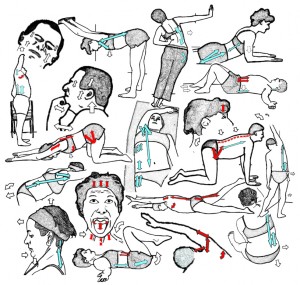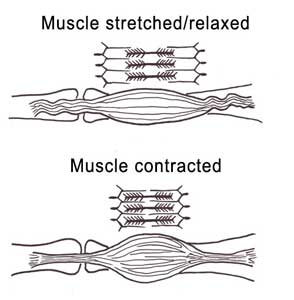About Safe Stretch

Safe stretch is an extensive and comprehensive list of safe stretching techniques suitable for beginners or people who are experienced in stretching. The book contains a good theoretical background explaining why you are doing a particular stretch, and it explains which muscles are stretched, which joints are moved and how they move during each stretch. It recommends which muscles should be stretched and where in the body the stretch should be focused. You will learn how to isolate and stretch individual muscles and groups of muscles in the body. Safe stretch is clear, easy to read, user friendly and has great diagrams and pictures. It is a treasure trove of information for anyone interested in stretching, containing everything you need to know about how to stretch and do it safely.
Safe Stretch is divided into an introduction, three parts, A, B and C, and an appendix. The introduction explains the theoretical and practical considerations behind stretching and the basic science of flexibility in language that anyone can understand once the terminology of anatomy is understood, and all the anatomical terms used in this book are defined in the appendix.
Part A. Technique contains 200 individual active, passive and post-isometric stretching exercises, one to a page, – each one divided into the starting position and the technique. Stretches are described for every major part of the body, starting with the head and working down the spine, then working down the upper limb, and then the lower limb, finishing with the feet and toes. The bullet points take you through the techniques in a straight forward way, step-by-step and the descriptions are easy to follow.
 Part B. Anatomy, Biomechanics and Safety contains the muscle and joint anatomy for the stretches – each section briefly reviews the starting position and then looks at the direction and range of movement, target tissues, and safety for the techniques. The book explains which muscles are stretched and which joints move during each exercise. It makes recommendations on how the muscles should be stretched safely, which joints or areas should be moved and which areas should not. All the information about stretching techniques and the explanations regarding how the stretches are applied is based on sound anatomy.
Part B. Anatomy, Biomechanics and Safety contains the muscle and joint anatomy for the stretches – each section briefly reviews the starting position and then looks at the direction and range of movement, target tissues, and safety for the techniques. The book explains which muscles are stretched and which joints move during each exercise. It makes recommendations on how the muscles should be stretched safely, which joints or areas should be moved and which areas should not. All the information about stretching techniques and the explanations regarding how the stretches are applied is based on sound anatomy.
Part C. Tables contains the icon tables for the practical things each stretch can be used for i.e. sports, jobs, hobbies etc. It covers a range of stretching routines: at the office, during pregnancy, stretches for older participants, playing musical instruments, before and after sports, specific sports like running, golf, swimming, cycling, and throwing and racket sports and a variety of popular activities. Although the book is comprehensive and is a great reference book, it aims to be as concise as possible and avoid unnecessary repetition. It focuses on specific areas of the body, and targets specific muscles and muscle groups.
About ninety different daily and weekly stretching routines have been assembled to complement sports, work and other activities, and these are based on the two hundred stretches in part A of the book. The stretches that make up these routines are listed as small icons in tables .
The stretches that make up the routines were selected according to a logical process and this is explained in part C of the book under the heading ‘Criteria to determine which muscles need to be stretched’. The selection of stretches is based on the anatomy, and in particular, which muscles and joints are used most during the various activities, and which are used least, and in some sedentary pursuits, which are not used at all or insufficiently. The end result of the selection process is shown in a set of tables listing the movements performed during the various sports or other activities. Through a logical process the information in these tables is then transferred to a final set of tables listing the stretches for the daily or weekly stretching routines.



